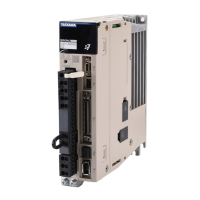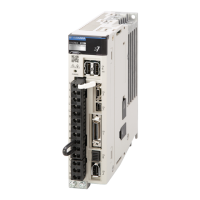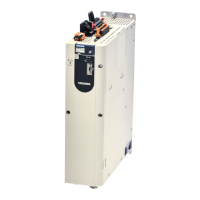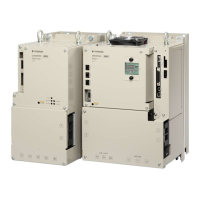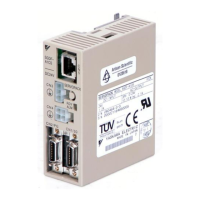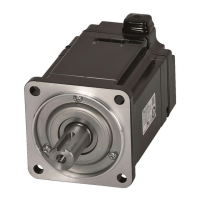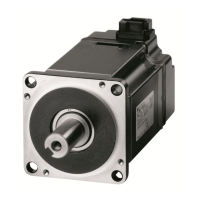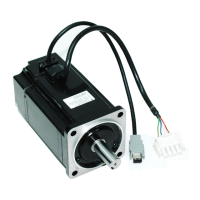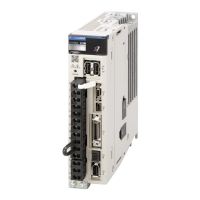CAUTION!
– Design the system to ensure safety even when problems, such
as broken signal lines, occur. For example, the P-OT and N-OT
signals are set in the default settings to operate on the safe side
if a signal line breaks. Do not change the polarity of this type of
signal.
– When overtravel occurs, the power supply to the motor is turned
OFF and the brake is released. If you use the Servomotor to
drive a vertical load, set the Servomotor to enter a zero-clamped
state after the Servomotor stops. Also, install safety devices
(such as an external brake or counterweight) to prevent the
moving parts of the machine from falling.
– Always turn OFF the servo before you turn OFF the power
supply. If you turn OFF the main circuit power supply or control
power supply during operation before you turn OFF the servo,
the Servomotor will stop as follows:
– If you turn OFF the main circuit power supply during operation
without turning OFF the servo, the Servomotor will stop abruptly
with the dynamic brake.
– If you turn OFF the control power supply without turning OFF the
servo, the stopping method that is used by the Servomotor
depends on the model of the SERVOPACK. For details, refer to
the manual for the SERVOPACK.
– If you use a SERVOPACK with the Dynamic Brake Hardware
Option, the Servomotor stopping methods will be different from
the stopping methods used without the Option or with other Hard-
ware Options. For details, refer to the following manual.
& Σ-7-Series Σ-7S/Σ-7W SERVOPACK with Dynamic Brake
Hardware Option Specifications Product Manual (Manual No.:
SIEP S800001 73)
– Do not use the dynamic brake for any application other than an
emergency stop.
There is a risk of failure due to rapid deterioration of elements in the
SERVOPACK and the risk of unexpected operation, machine
damage, burning, or injury.
Sigma-7 Series SERVOPACKs
General
Safety Precautions > Safety Precautions That Must Always Be Observed
| | PROFINET Communications - SIEP YEUOC7P 02A Revision 0 | en | 33
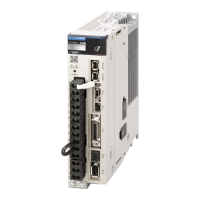
